If you were lucky enough to have believing Catholic parents, they probably gave you a spiritual patron in naming you after a saint. If not, perhaps in time you chose a saint who appealed to your soul in a special way or even found out that you had been chosen by some great saint of the faith who became a model or mentor for you on your spiritual journey. That happens!
Those of us who try to live a vital spiritual life are usually saint-oriented, not in a way that distracts from love of Christ, but in a healthy way that inspires us and leads us to Christ. To reprise our constant theme: saints are sacred windows that give us a glimpse into the life of the Trinity, and we are so blessed to be in this company which the Book of Hebrews calls “the great cloud of witnesses” (Heb 12:1).
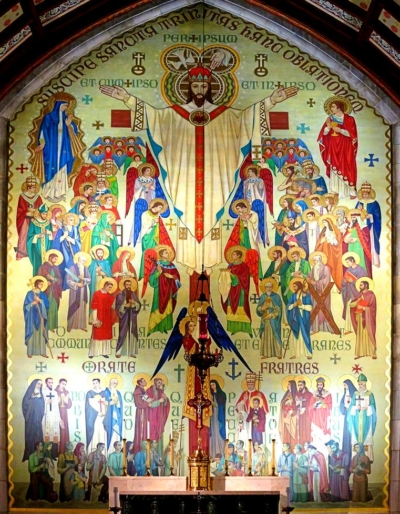 Cloud Not Platform
Cloud Not Platform
Here’s a fascinating truth for saint-watchers: saints are our friends and companions but not our personal valets. They are not ours, they are Christ’s (He lends them to us!). Neither are they spiritual entrepreneurs like the celebrities who promote themselves all over social media these days. If I may indulge in a few modern metaphors, saints have been uploaded to the cloud (of witnesses), but they don’t manage their own personal platforms. In other words, they are too selfless to have Instagram accounts.
Certainly there have been amazingly talented, holy, dynamic individuals who reached the heights of sanctity, but not one of them got there on their own merits or talents alone. None of them could have achieved sanctity without a connection to the larger body of believers we call the Church. Another term for that community is the “communion of saints”, which is a description of the timeless connection between the glorified saints in heaven, the souls being purified in purgatory, and the rest of us believers fighting the good fight here on earth. As they say, we’re all in this together.
A Group Activity
That’s also why, in the history of the Church, saints are so often found in pairs, groups, and teams. This communion of saints begins in the here and now with the Church on earth. Saintly people (some of whom eventually get canonized) are always working with others to bring society out of darkness and into the light of Christ.
 Even the great St. Anthony (250-350 AD – yes, he was over 100 when he died), who renounced everything and went off by himself to the desert to pray for his soul, inadvertently ended up with a band of devoted followers. They were all attracted to his sanctity like moths to a flame. That’s the way holiness works, like a magnet, not a megaphone.
Even the great St. Anthony (250-350 AD – yes, he was over 100 when he died), who renounced everything and went off by himself to the desert to pray for his soul, inadvertently ended up with a band of devoted followers. They were all attracted to his sanctity like moths to a flame. That’s the way holiness works, like a magnet, not a megaphone.
As an exercise in saint-gazing, I’d like to point out some of the amazing saint pairs, teams, and tight-knit holy families we find throughout history. The groupings listed below essentially consist of natural or strictly spiritual relationships, without counting the larger organized groups we call religious orders throughout the history of the Church (with one exception as we will see). Religious orders may be the best (earthly) models of the communion of saints we have, but there are too many examples of them to list here!
Furthermore, the list of saints includes only canonized or beatified saints because they are the most notable. Needless to say, even among the canonized, our list could be much, much longer, not to mention the countless non-canonized saints of the Church. So, check out these amazing assemblies of saints. They are like the icing on the Church’s cake of sanctity throughout history.
Sibling Saints or Families
The Cappadocians (4th century) – I wrote about this extraordinary family in a previous newsletter. This family from Northern Turkey counts no fewer than eight saints (martyrs and canonized saints) spanning three generations!
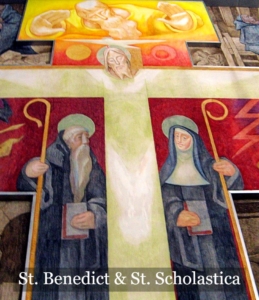 Sts. Monica and Augustine (4th – 5th centuries) – mother and son; their story is fully and beautifully detailed in St. Augustine’s classic autobiography, Confessions.
Sts. Monica and Augustine (4th – 5th centuries) – mother and son; their story is fully and beautifully detailed in St. Augustine’s classic autobiography, Confessions.
Sts. Benedict and Scholastica (5th – 6th centuries) – brother and sister; they escaped the corruption of the world after the Fall of Rome and ended up establishing the male and female branches of the religious order we know as the Benedictines.
Sts. Cyril and Methodius (9th century) – the two Greek brothers who evangelized the Slavic peoples and are known to history as the “Apostles to the Slavs”.
The Martin Family (19th – 20th centuries) – St. Therese of Lisieux’s family; her parents (Zelie and Louis Martin) were canonized in 2015, and one of her sisters (Léonie), was declared Venerable in the same year.
The Fatima Children (20th century) – brother and sister, Francisco and Jacinta Martos, were canonized in 2017, and the cause for the canonization of their cousin, Sr. Lucia, was opened in 2008.
Friend Saints
Sts. Perpetua and Felicity (early 3rd century) – the two friends were martyred in North African persecution in 203 AD. While they were from different social classes, they are both famous for being young mothers who chose to renounce life and family rather than to renounce Christ.
Sts. Pontian and Hippolytus (mid-3rd century) – pope and bishop, this unlikely pair were not initially friends but rivals (Hippolytus was actually an anti-pope!); they reconciled and became friends while they were in exile in the salt mines of Sardinia where both were martyred.
Sts. Basil the Great and Gregory Nazianzen (4th century) – the patron saints of friends were called “two streams of one river”; Basil is one of the Cappadocians and Gregory had two other siblings who are canonized saints in the Eastern Church.
Sts. Thomas More and John Fisher (16th century) – these two men were the first victims of the homicidal Henry VIII when they refused to accept his illegitimate re-marriage or his plan to declare himself Head of the Church.
Sts. Felicity and Perpetua
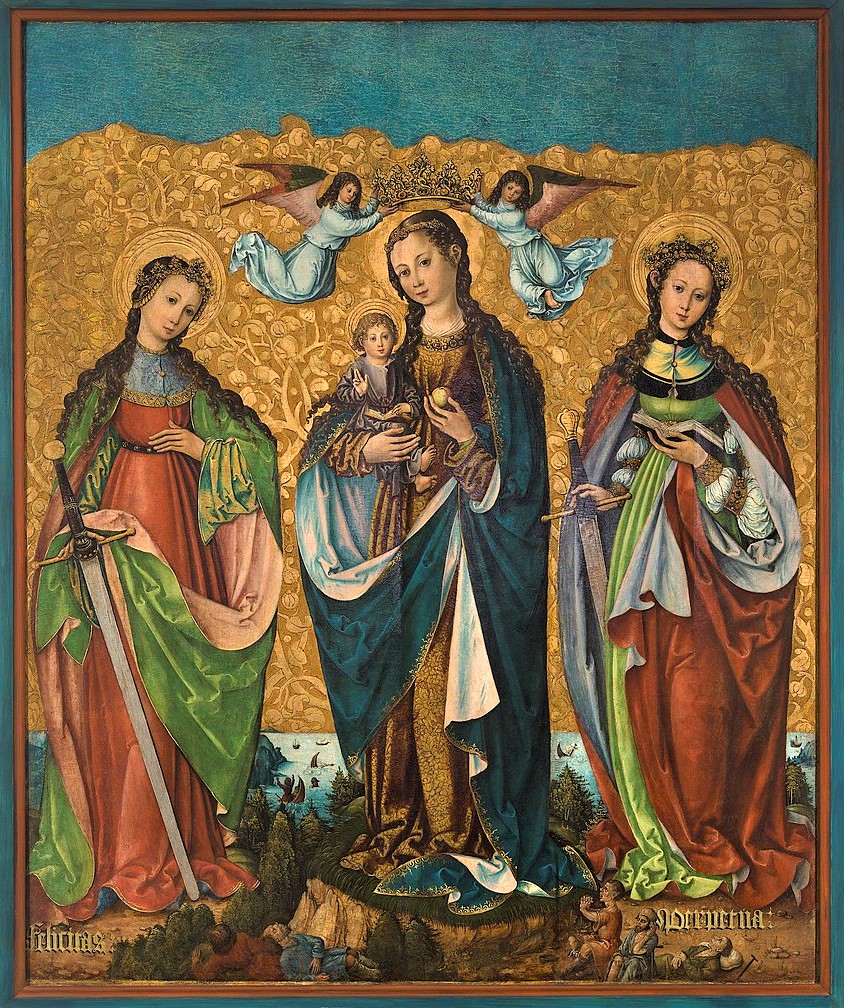
Sts. Ambrose and Augustine
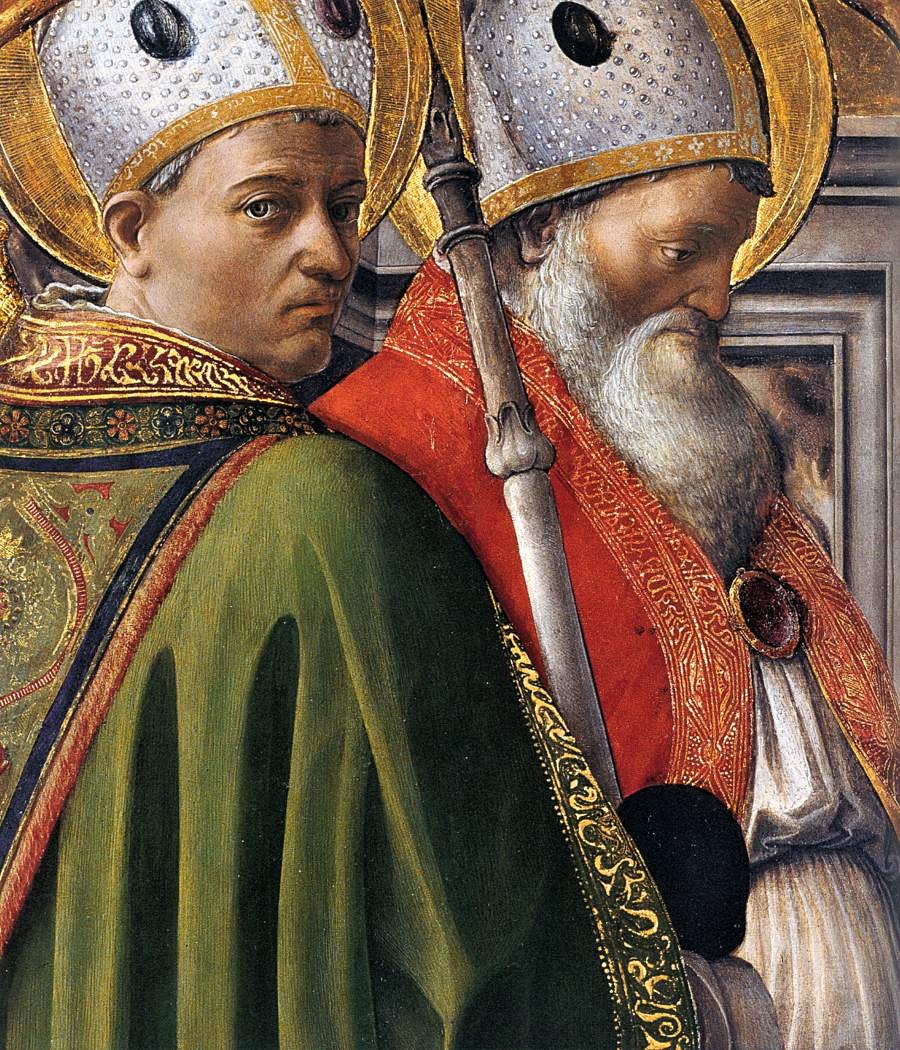
“Influencer” Saints
For lack of a better word, I’m labeling this group of saints with a term from modern social media – “influencers” – because of the outsized influence of one saint on another. This influence is expressed in preaching, mentoring, sponsoring, spiritual direction, or tutoring in sanctity, or sometimes in mandating a mission. The recipients in turn dedicated their missions to the sanctification of others.
St. Ambrose and St. Augustine (4th century) – it was St. Ambrose, Bishop of Milan, whose intelligence and sermons led the brilliant young pagan, Augustine, to open his genius mind to the truths of the Catholic Faith.
St. Gregory the Great and St. Augustine of Canterbury (late 6th century) – Pope St. Gregory the Great, who established Gregorian chant, also sent St. Augustine to England as a missionary.
Bl. Raymond of Capua and St. Catherine of Siena (14th century) – Blessed Raymond was Catherine’s spiritual director for numerous years and helped her discern the mystical revelations and divine mandates she was receiving.
St. Claude de la Colombiere and St. Margaret Mary Alocoque (17th century) – St. Claude was the young Jesuit spiritual director of the convent of Visitation Sisters where he helped St. Margaret Mary discern and eventually propagate the apparitions of the Sacred Heart.
Groups that Served a Major Outpouring of Grace
The 12 Apostles with St. Paul and his Companions (Titus, Silvanus, Timothy, Priscilla and Aquila) – these servants of the grace that flowed from Pentecost hardly need an explanation.
The First Jesuits: Sts. Ignatius of Loyola, Francis Xavier, Peter Faber, and Peter Canisius (16th century) – these founders of the Jesuits launched a much-needed reformation the Catholic Church at the time of the Protestant Rebellion.
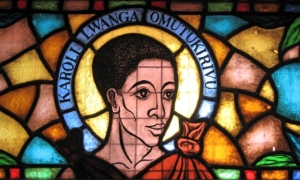 Saints of the New World: Sts. Rose of Lima, Martin de Porres, John Macias, Toribio de Mongrovejo, and Peter Claver (late-16th and 17th centuries) – unbelievably, the first four were contemporaries in the same diocese of Lima, Peru, while Claver lived at roughly the same time period just north of them in Cartagena, Colombia.
Saints of the New World: Sts. Rose of Lima, Martin de Porres, John Macias, Toribio de Mongrovejo, and Peter Claver (late-16th and 17th centuries) – unbelievably, the first four were contemporaries in the same diocese of Lima, Peru, while Claver lived at roughly the same time period just north of them in Cartagena, Colombia.
St. Charles Lwanga and the Ugandan Martyrs (19th century) – St. Charles Lwanga was the teacher of most of the 22 Ugandan martyrs, whose horrible deaths planted the seeds of Christianity in that country.
Male-Female Saint Pairs
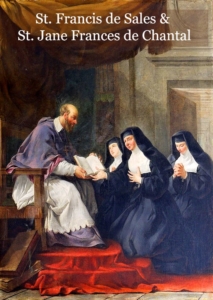 St. Francis and St. Clare (12th century) – both founders of religious orders.
St. Francis and St. Clare (12th century) – both founders of religious orders.
St. Teresa of Avila and St. John of the Cross (16th century) – reforming saints of the Carmelite order.
St. Vincent de Paul and St. Louise de Maurillac (early 17th century) – founders of the Daughters of Charity.
St. Francis de Sales and St. Jane Frances de Chantal (early 17th century) – founders of the Visitation Sisters.
St. John Eudes and St. Mary Euphrasia Pelletier (17th and 18th centuries) – both were founders of religious orders, Mary Euphrasia being inspired by the earlier writings of Fr. Eudes.
Odd Couples
St. Agnes and St. Thomas Aquinas (4th and 13th centuries) – the greatest theologian of the Church was deeply devoted to the 12-year-old Roman martyr, Agnes,  who died violently in the persecution of Diocletian in 304 AD.
who died violently in the persecution of Diocletian in 304 AD.
St. Philomena and St. John Vianney (4th and 19th centuries) – the patron saint of all priests was likewise devoted to another young martyr of the early Church, Philomena, whose tomb was discovered in a Roman catacomb in 1802 when Vianney was a teenager.
St. Teresa of Avila and St. Teresa Benedicta of the Cross (16th and 20th) – the first Teresa was a Spanish Carmelite nun; the second Teresa was an atheist German Jew who was converted by reading Avila’s autobiography.
A Category of One
In a category of her own is St. Joan of Arc (15th century) whose best friends, influencers, mentors, and guides for her mission were not actually “of this world”: Joan’s visions of St. Michael the Archangel himself and two female saints of the ancient church (Sts. Margaret of Antioch and Catherine of Alexandria) led to her deep sanctity and a world-changing mission.
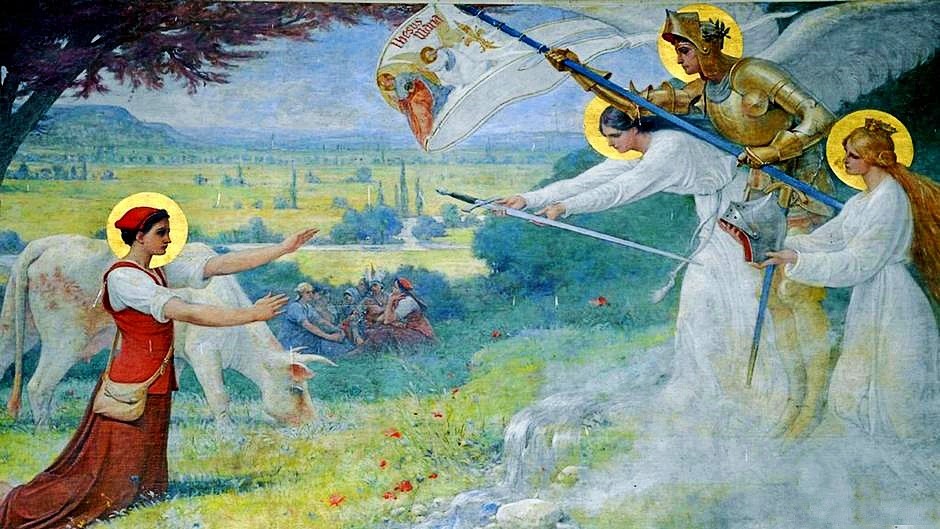
Ah! I’ve run out of time and space, so I am not able to augment this list. But by now, I’m sure you have a clear idea of the meaning of “communion of saints.” You probably also knew that I had to end with my own favorite saint, Joan of Arc!
———-
[Note: This article is a reproduction of the Sacred Windows Email Newsletter of 1/22/23, so it does not end with the regular Soul Work section. Please visit our Newsletter Archives.]

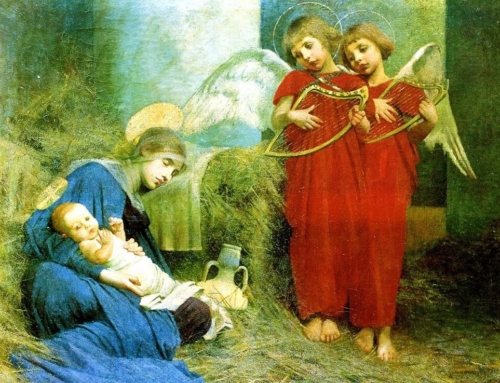

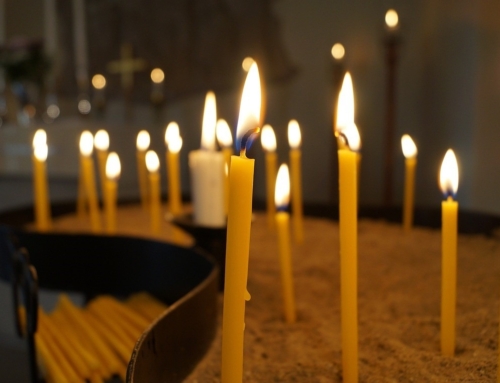
Leave A Comment